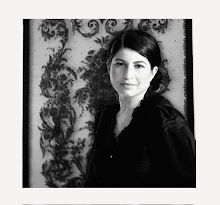“What’s wrong with marriage anyway?” asks Meryl Streep. “It’s a wonderful marriage, isn’t it?” she tells herself, sounding enthusiastic and uncertain at the same time. Then her voice sinks into a more plaintive tone: “You make concessions when you’re married a long time. When you’ve slept together a thousand nights.”
What film are these lines from? No one film. They're spliced from the many films that make up the two video installations that were on “Him+Her,” Candice Breitz’s recent solo show at Yvon Lambert in Chelsea. The second installation, housed in an identical blacked-out room next to the first, saw Jack Nicholson—“Him”— engage in his own schizophrenic internal dialogue, although it goes without saying that he was more worried about his mental state than his marriage.
For some years now, films have been far more than mere inspiration for the Berlin-based South African artist; they are the raw material that she slices, dices, manipulates and reshapes. To make “Her,” Breitz sifted through 30 years worth of films that Streep has starred in; for “Him,” she went through movies headlined by Nicholson over a forty-year period, beginning in 1968. Separate installations of seven plasma screens each on a minimalist steel structure played twenty eight different versions of Streep in flicks from Kramer vs. Kramer and Sophie’s Choice all the way to the more recent The Devil Wears Prada, and 23 Nicholsons taken from One Flew Over the Cuckoo’s Nest, The Shining, As Good As It Gets and more.
Treating Hollywood movies like found objects is nothing new. Jack Goldstein and Dara Birnbaum were appropriating from film and television in the early 1980's, and in the nineties the video work of Douglas Gordon and Christian Marclay dominated. Still, “Him + Her” seems timelier and fresher in the late noughties, probably because as a society we’re more obsessed with celebrity than ever before. Streep and Nicholson are arguably the most charismatic actors alive today and Breitz’s brilliant editing essentially creates two new 23-minute films. It is riveting to watch the screens alternate close-ups of their faces—sometimes using a filmic shot-counter-shot technique or running two of the same images at once—to play the revamped monologues. And once the nostalgia for all of their fine films passes, not to mention the impossible-to-resist comparison of how the two Oscar favorites have aged, focus shifts to the text of the pieces being communicated through the lines that the artist has culled. “Her” traverses men, love, marriage, divorce; “Him” is more self-reflective, about integrity, fear of commitment and also the anxiety of losing one’s mind.
If these works seem like opportunistic attempts to cash in on the notoriety of the famous subject, Breitz counters by saying that Nicholson and Streep are not the true subjects of “Him + Her.” Her focus lies instead on “the unconscious of mainstream cinema, the values and layers of meaning that slowly start to make themselves legible when the big plots are stripped away.” Breitz reshapes her borrowings enough for her work to achieve autonomy and to induce deep reflection on the gender biases that Hollywood has perpetuated for close to half a century, but there is no doubt that the popularity of her show (it was mobbed on opening night), has something to do with Streep and Nicholson.
Breitz, 36, is considered one of the most important video artists working today. She has her own famous fans like Princess Caroline of Monaco and Francesca Von Habsburg, wife of Archduke Karl of Austria, Prince Royal of Hungary and Bohemia, and her videos are in the permanent collections of museums including the Guggenheim. But how she manages to pay for the rights for any of this material—or how she gets away with not paying—is still anyone’s guess. “Him + Her” follows on from a previous piece by Breitz, “Mother + Father,” first shown in New York in 2005. Here, the artist stripped the sentences of 12 Hollywood actresses and actors—including Streep and also Faye Dunaway, Dustin Hoffman and Steve Martin—from various films to form new discussions about parenthood. The result then as now, is an experience so intensely mesmerizing and emotionally gripping, it is hard not give the actors—and the artist—a standing ovation.
This article appears as a review in the June/July issue of Art South Africa
Friday, February 20, 2009
Subscribe to:
Posts (Atom)
